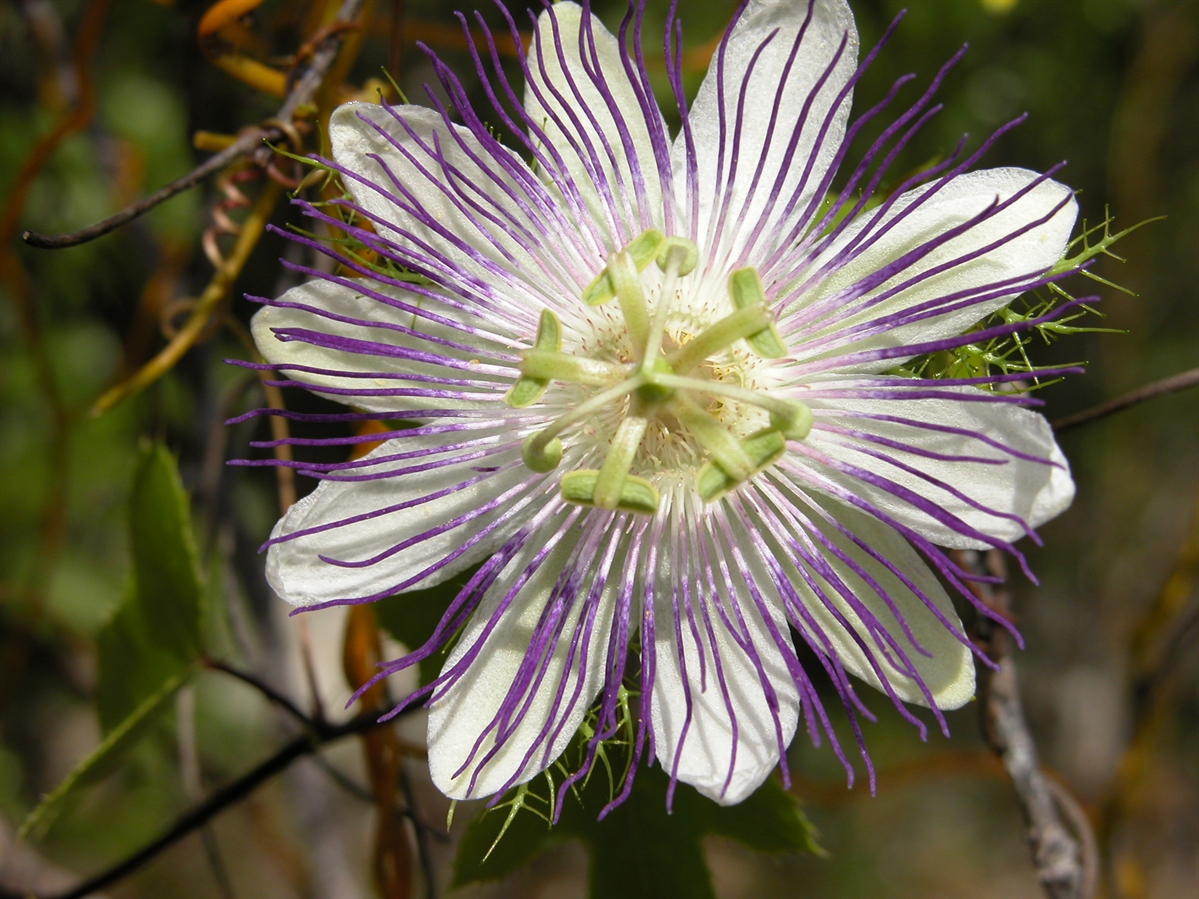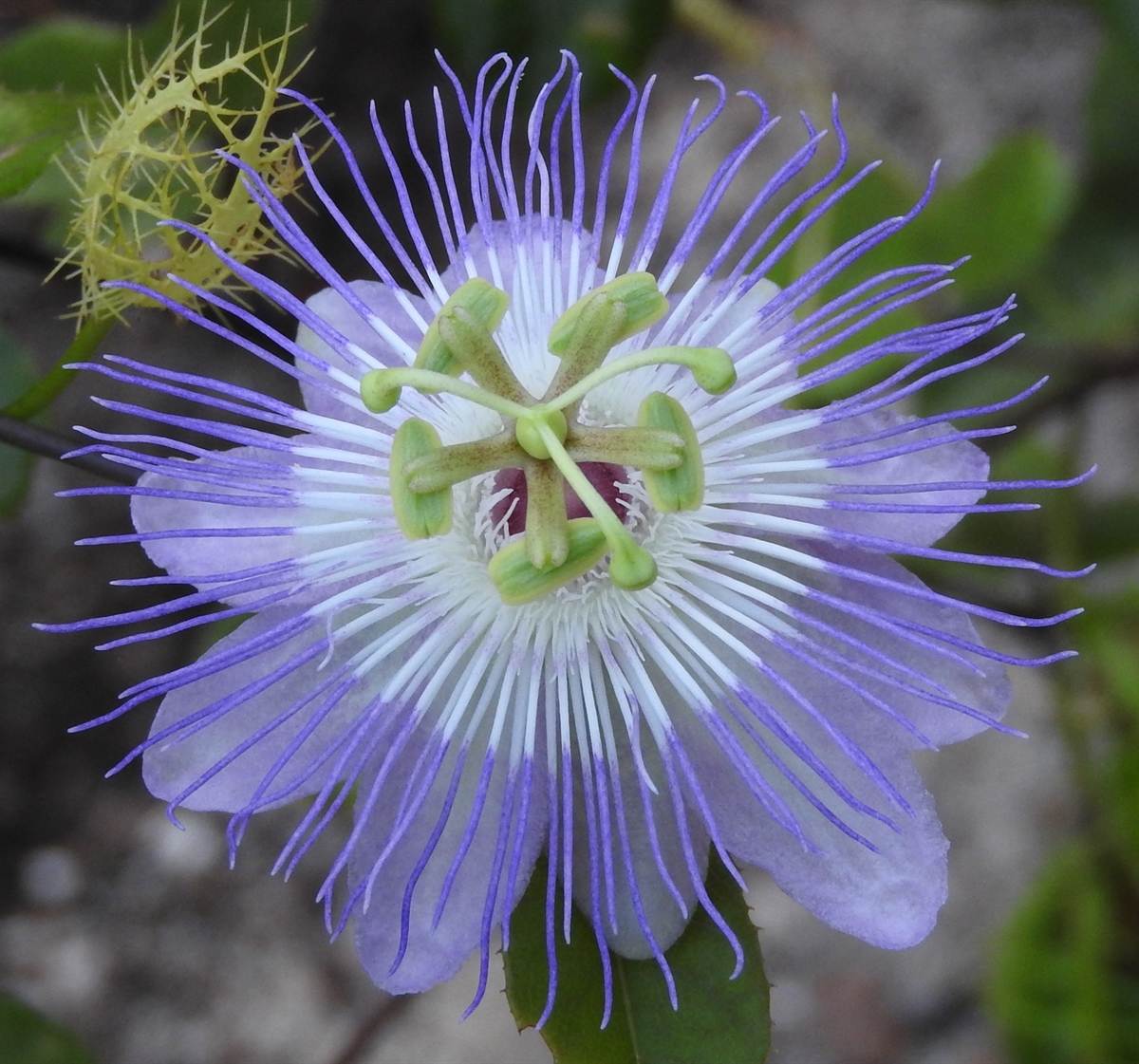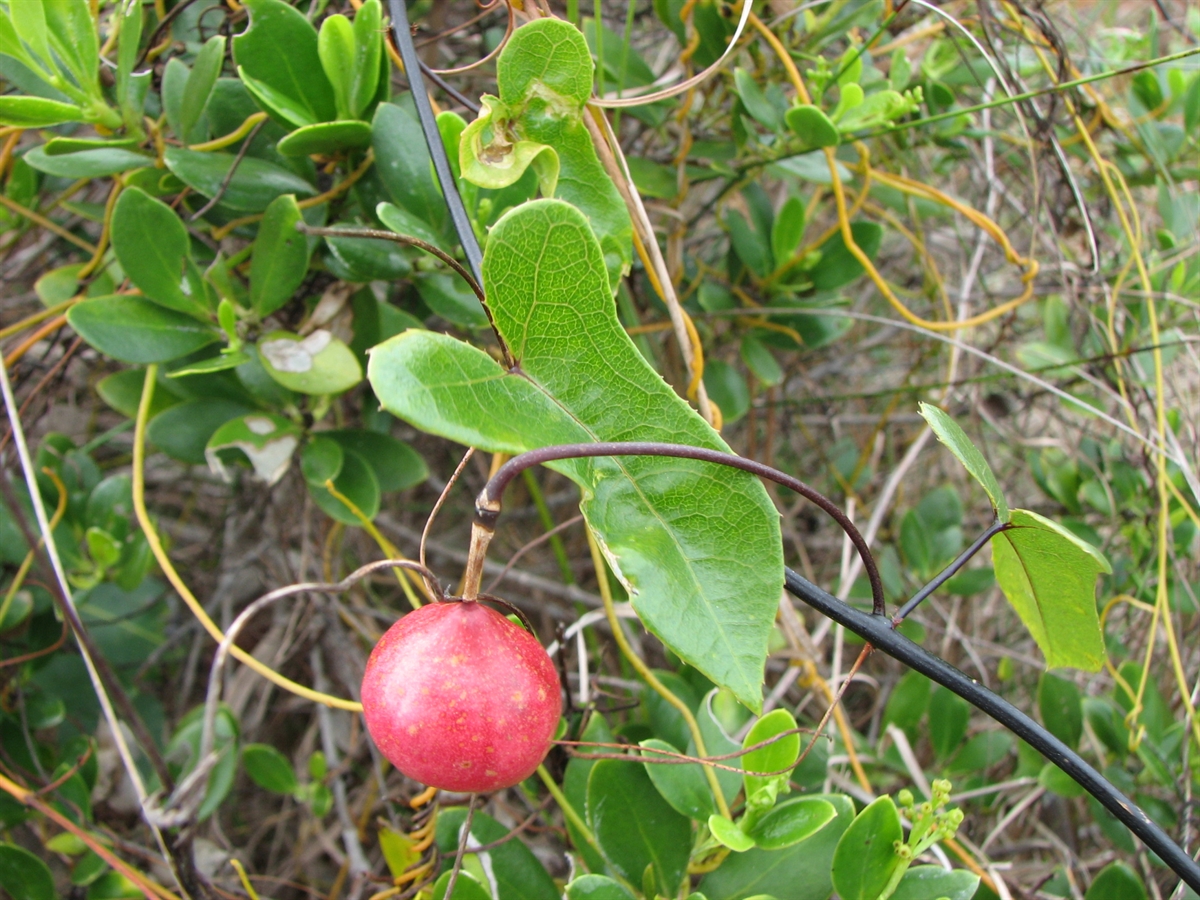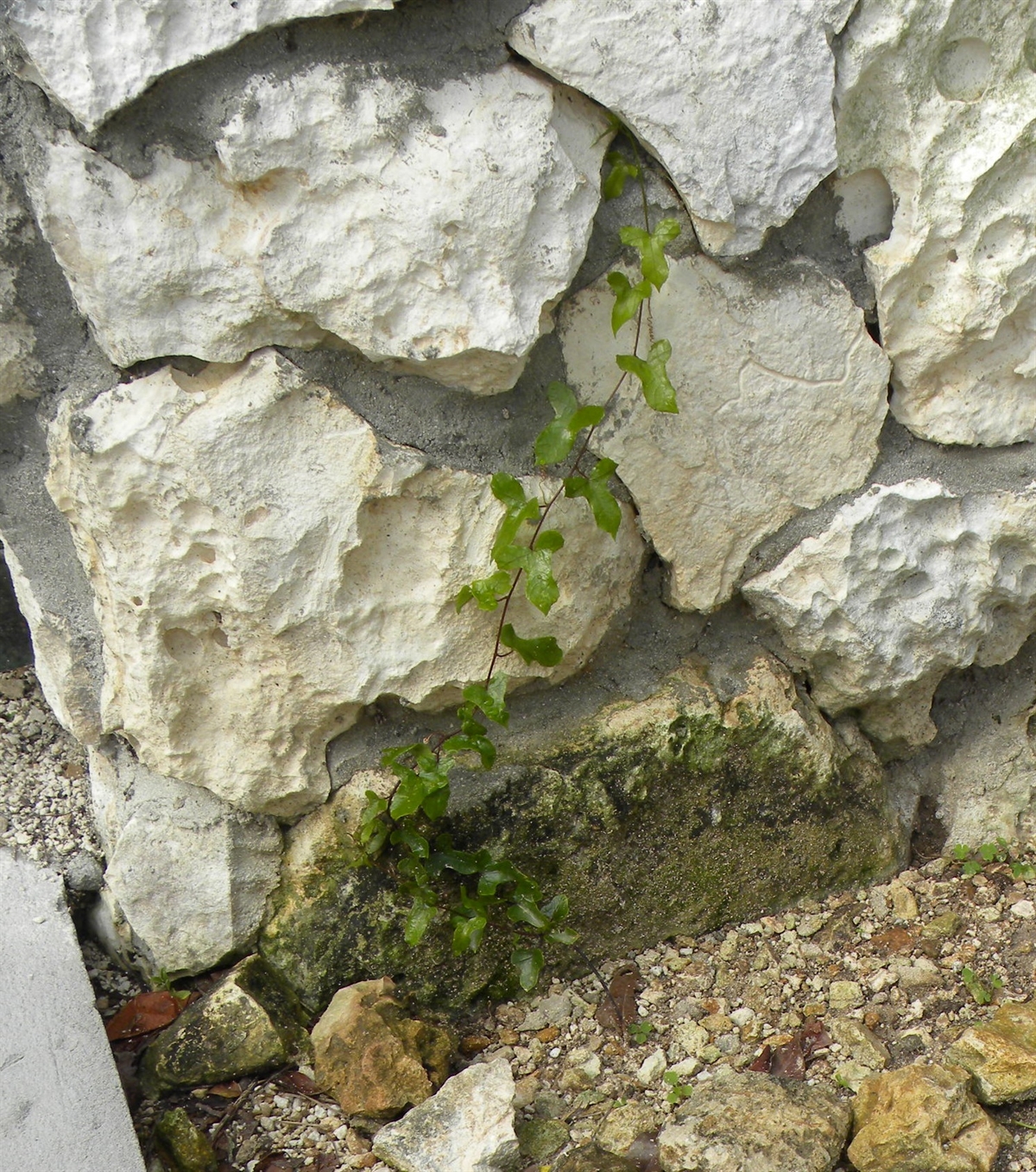Habit: Passiflora bahamensis grows as a glabrous vine with older portions becoming corky with age. The leaves are arranged alternately, to 8 cm in length with glandular stipules at the petiole base. Petioles have glandular hairs. The leaves are 3-lobed with each lobe with an acuminate lobe apex. The leaf margin is denticulate and glandular. Tendrils are present at the nodes.
The complete, perfect, actinomorphic flowers are arranged in pairs or are solitary. There are 3 pinnately dissected bracts below the flower. The calyx has 5 white unfused sepals. The corolla has 5 white unfused petals. There is a corona with filaments in 5 series. The outer series exceed the length of the petals and are purple throughout their length with a white base. The inner series are very short and white. There are 5 stamens. The ovary is superior, with 3 stigmatic lobes, a single locule and numerous seeds. The fruit is a berry that turns bright red at maturity.
Habitat: Passiflora bahamensis grows in Pine Woodlands and Sabal palmetto Woodlands.
Distribution: Passiflora bahamensis occurs on the northern pine islands (Andros, Abaco, New Providence, and Grand Bahama) and is currently cultivated at the Leon Levy Native Plant Preserve on Eleuthera.
Passiflora bahamensis is endemic to the Lucayan Archipelago
Medicinal/Cultural/Economic usage: Passiflora bahamensis is not known to be used medicinally in the Lucayan Archipelago.. The fruits are edible although not particularly tasty.



